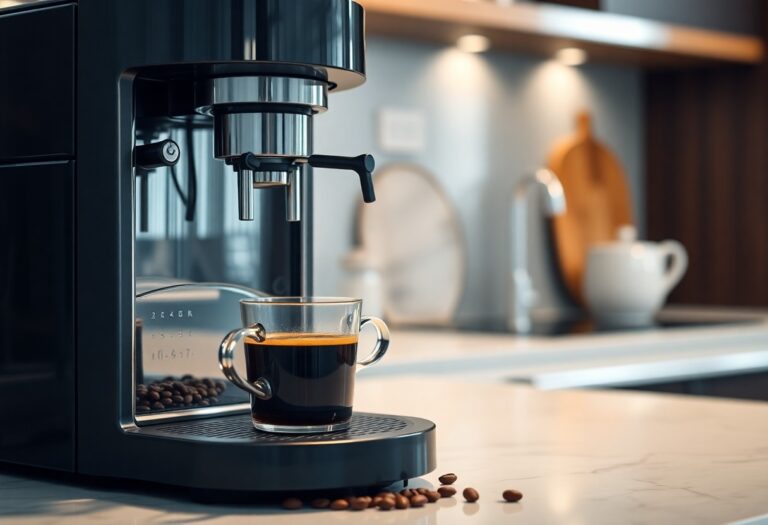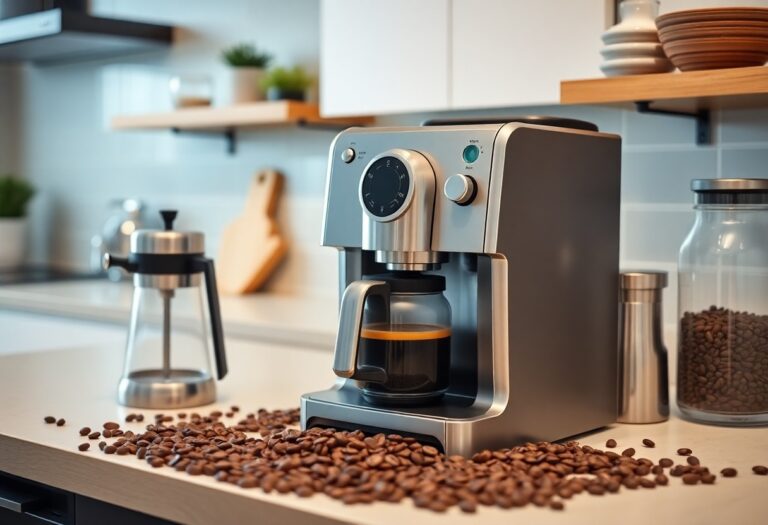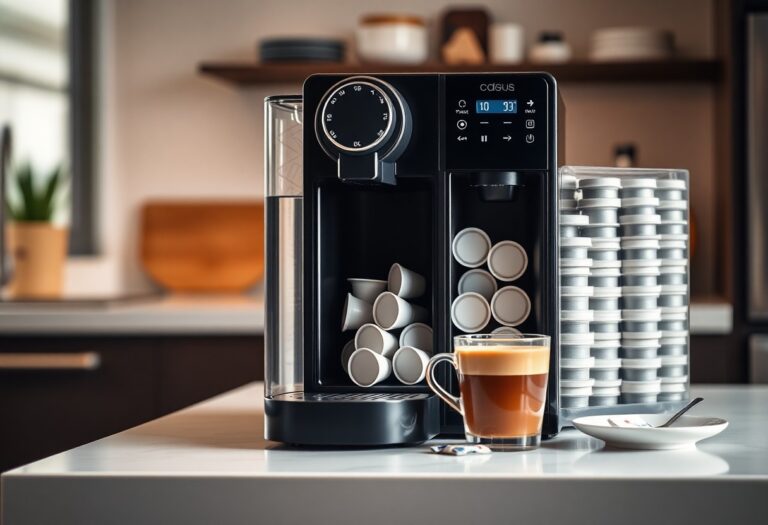How to Descale a Coffee Machine: Complete Decalcification Guide
Descaling your coffee machine is a crucial step in maintaining its performance and longevity. Mineral deposits, primarily limescale from calcium and magnesium in water, accumulate over time inside the machine. This build-up affects not only the brewing efficiency but also the flavor of your coffee, often making it taste bitter or off.
Why you should descale regularly:
- Prevents clogging and slow brewing cycles
- Maintains optimal water temperature for extraction
- Preserves the machine’s internal components from damage
- Ensures consistent coffee taste and aroma
The descaling process involves running a specialized solution through your coffee maker to dissolve mineral deposits. Whether you use commercial descaling agents or homemade alternatives, this guide will walk you through everything you need to know about how to descale a coffee machine.
In addition to descaling, understanding the proper usage of your coffee machine can significantly enhance your brewing experience. For instance, if you’re using a filter coffee machine, following specific brewing instructions can help you achieve the best results. This complete decalcification guide equips you with practical knowledge to keep your machine running smoothly and your coffee tasting its best.
Understanding Descaling
When it comes to descaling your coffee machine, understanding the key elements involved can help you tackle the process effectively:
1. Explanation of Limescale
Limescale is a common mineral deposit that accumulates in coffee machines due to the presence of calcium and magnesium in water. Over time, limescale can clog pipes, reduce heating efficiency, and affect the taste of your coffee.
2. Types of Mineral Deposits
Apart from limescale, water can contain other mineral deposits such as iron or aluminum. These deposits can vary based on the source of your water supply and its mineral content.
3. Descaling Agents and Their Effectiveness
There are different descaling agents available for cleaning your coffee machine, each with varying degrees of effectiveness. Some common descaling agents include citric acid, vinegar, and commercial descaling solutions. The choice of descaling agent may depend on the severity of limescale build-up and the material of your coffee machine.
Understanding these aspects of descaling is crucial for maintaining the performance and longevity of your coffee machine. Choosing the right descaling agent and knowing how to address different types of mineral deposits can ensure that your machine continues to brew delicious coffee without any issues.
Methods of Descaling
Descaling a coffee machine effectively requires selecting the right agent. You have two main options: commercial descaling agents and homemade solutions.
Commercial Descaling Agents
Specialized descaling powders and liquids are designed specifically for coffee machines. Brands like Urnex and Dezcal offer formulas that target limescale without damaging internal components. These products usually contain mild acids such as citric acid or sulfamic acid, which dissolve mineral deposits efficiently.
Benefits of commercial descaling products:
- Safety: Formulated to protect delicate parts and seals.
- Effectiveness: Quickly removes stubborn scale buildup.
- Convenience: Easy to measure and use with clear instructions.
- Neutralizing odors: Less likely to leave unpleasant smells compared to vinegar.
General descaling agents often work across various household appliances, but specialized powders tend to be more tailored for coffee machines. Using these reduces the risk of corrosion or residual flavors affecting your brew.
Homemade Descaling Solution Using White Vinegar
White vinegar is a popular DIY remedy for descaling due to its acetic acid content, which breaks down minerals.
Recipe:
- Mix equal parts white vinegar and water (e.g., 1 cup vinegar + 1 cup water).
- Pour the solution into the water reservoir.
- Run a brew cycle without coffee grounds.
- Repeat if necessary for heavy buildup.
- After descaling, run 2–3 cycles with clean water to rinse thoroughly.
Pros of homemade vinegar solution:
- Cost-effective and readily available.
- Natural and free from harsh chemicals.
- Easy to prepare in any kitchen.
Cons of using vinegar:
- Strong odor that can linger in the machine.
- Potential risk of damaging metal parts or rubber seals if used too frequently or in high concentrations.
- May not be as fast or effective on severe scale compared to commercial products.
DIY methods suit occasional maintenance or when commercial products are unavailable. However, regular users with hard water might benefit more from specialized powders that offer consistent results while preserving machine longevity.
Descaling Process Step-by-Step
Descaling your coffee machine properly ensures efficient removal of mineral deposits and preserves the quality of your coffee. Follow these detailed steps to descale using a commercial descaling agent or a homemade solution:
1. Prepare the Descaling Solution
- If using a commercial descaler, follow the manufacturer’s instructions to mix the solution with water.
- For homemade vinegar solution, mix equal parts white vinegar and water.
2. Fill the Water Reservoir
Pour the prepared descaling solution into the coffee machine’s water reservoir.
3. Run the Brewing Cycle
Start a full brewing cycle without adding coffee grounds. This allows the descaling agent to flow through internal components, breaking down limescale and mineral build-up.
4. Pause Mid-Cycle (Optional)
Some recommend pausing halfway through the cycle to let the solution sit inside heating elements and pipes for 15-20 minutes, enhancing effectiveness.
5. Complete the Cycle
Resume or finish the brewing cycle so all descaling solution passes through.
6. Rinse Thoroughly
Empty any remaining descaling liquid from the reservoir and rinse it well with fresh water. Run at least two full cycles with clean water only to flush out any residual chemicals or vinegar taste.
7. Clean Removable Parts
Wash removable components such as filters, drip trays, and carafes separately with warm soapy water.
Frequency of Descaling
- Hard Water Areas: Descale every 1 month if you use your coffee machine daily due to faster scale accumulation.
- Soft Water Areas: Every 3-6 months is sufficient.
- Infrequent Use: Descale at least twice a year to prevent build-up even if usage is low.
Regular adherence to this routine safeguards your machine’s longevity and maintains optimal brewing performance, ensuring each cup tastes as intended in your journey of How to Descale a Coffee Machine: Complete Decalcification Guide.
Maintenance Tips for Coffee Machines
Daily cleaning is essential for maintaining the performance and longevity of your coffee machine. Here are some key steps to ensure your coffee maker stays in top condition:
- Wiping Exterior: Use a damp cloth to wipe down the exterior of the coffee machine regularly to remove any dust, dirt, or coffee splatters. This simple step helps keep your machine looking clean and presentable.
- Hand-Washing Parts: Removable parts such as the carafe, filter basket, and lid should be hand-washed with warm, soapy water after each use. This prevents coffee oils and residues from building up and affecting the taste of your brew.
If you own a K-Cup coffee machine, it’s crucial to follow specific maintenance instructions for optimal performance. Similarly, Keurig machines require an ultimate maintenance guide to ensure longevity. For those using a Krups coffee machine, adhering to a dedicated maintenance guide can make a significant difference.
By incorporating these daily cleaning practices into your routine, you can enjoy fresh and flavorful coffee every day while prolonging the life of your beloved coffee machine. Additionally, if you’re exploring different brewing methods such as using an espresso machine, our detailed brewing guide can provide valuable insights.
Water Quality Considerations
Impact of Water Quality on Scale Build-Up
Water quality plays a crucial role in the formation of mineral deposits, such as limescale, in coffee machines. Using hard water with high mineral content can lead to faster scale build-up, affecting the performance and lifespan of the appliance.
Benefits of Using Filtered Water
Filtered water reduces mineral concentration, slowing down scale accumulation in coffee machines. It helps maintain the machine’s efficiency and prolongs its life by minimizing mineral build-up.
Risks Associated with Distilled Water
Using distilled water in certain coffee machines can be risky due to its lack of minerals. Distilled water may cause damage to metal components in the machine over time, impacting its functionality and longevity.
Conclusion
Proper descaling is essential for extending the lifespan of your coffee machine and ensuring consistently delicious coffee. Ignoring mineral build-up can lead to decreased performance, longer brew times, and unpleasant flavors. You can rely on this How to Descale a Coffee Machine: Complete Decalcification Guide to keep your machine running smoothly.
Key reminders:
- Regular descaling prevents limescale damage.
- Use recommended descaling agents or trusted homemade solutions.
- Follow rinsing instructions carefully to avoid residue.
- Adjust frequency based on water hardness and usage patterns.
Make sure to stick to a consistent routine—your coffee machine’s longevity and the quality of your daily cup depend on it.







